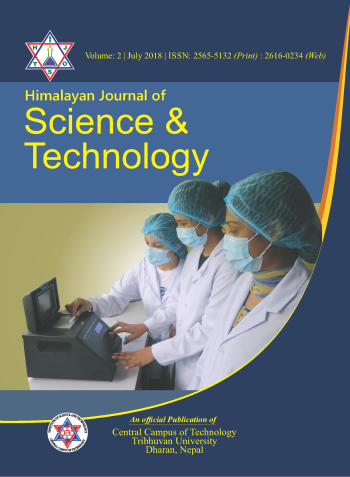Bacteriological Profile of Urinary Tract Infections among Postmenopausal Women Visiting Alka Hospital, Lalitpur, Nepal
DOI:
https://doi.org/10.3126/hijost.v2i0.25841Keywords:
UTI, Postmenopausal, Antibiotic susceptibility testAbstract
Urinary tract infection (UTI) is one of the most common diseases encountered worldwide and is a major public health problem in terms of morbidity and financial costs. A cross-sectional study was conducted in Alka Hospital, Lalitpur, Nepal from February to July, 2014. A total of 353 midstream urine samples were collected from postmenopausal women visiting Alka Hospital, Lalitpur, Nepal. The samples were examined by microscopically and culture methods. The isolated organisms were identified by conventional microbiological methods. Antibiotic susceptibility test was performed by modified Kirby-Bauer disc diffusion method according to CLSI (2011) guidelines. Among 353 urine samples processed, 32 % (113) showed significant bacteriuria. Out of 113 bacterial isolates, the prevalence of gram negative bacteria was 97.3% (110) while that of gram positive was 2.7% (3). The most predominating organisms causing UTI were Escherichia coli (84.9%) followed by Klebsiella pneumoniae (5.3%), Enterococcus faecalis (1.7%), Providencia spp. (1.7%), Klebsiella oxytoca (1.7%), Proteus mirabilis (1.7%), Proteus vulgaris (0.9%), Citrobacter freundii (0.9%) and Staphylococcus aureus (0.9%). Antibiotic susceptibility tests of the isolates showed that, most of the gram negative bacterial isolates were sensitive to Piperacillin+Tazobactam followed by Amikacin, Imipenem and Nitrofurantoin, while they were resistant to Amoxicillin. All gram positive isolates were sensitive to Amoxicillin and resistant to Gentamycin. This study showed that higher aged postmenopausal women (>80 years) were at higher risk for UTI than those of lower aged ones (<80 years).
Downloads
Downloads
Published
How to Cite
Issue
Section
License
© Himalayan Journal of Science and Technology
All rights reserved.




